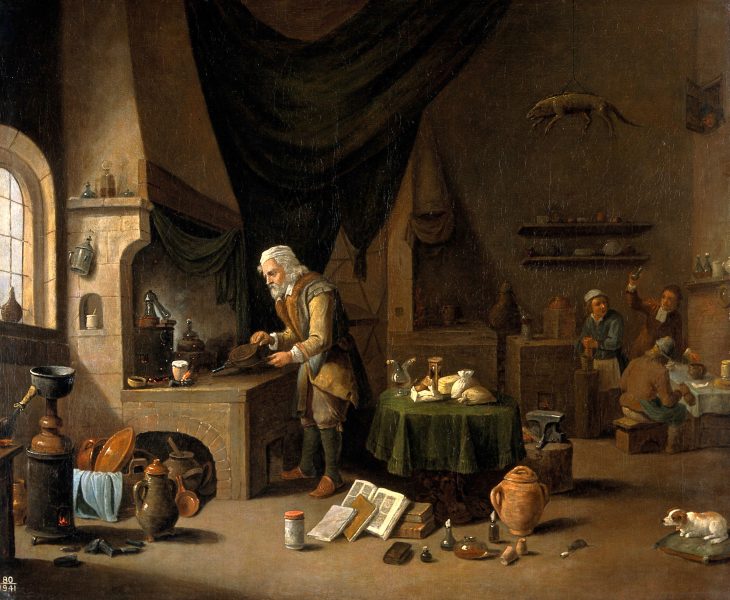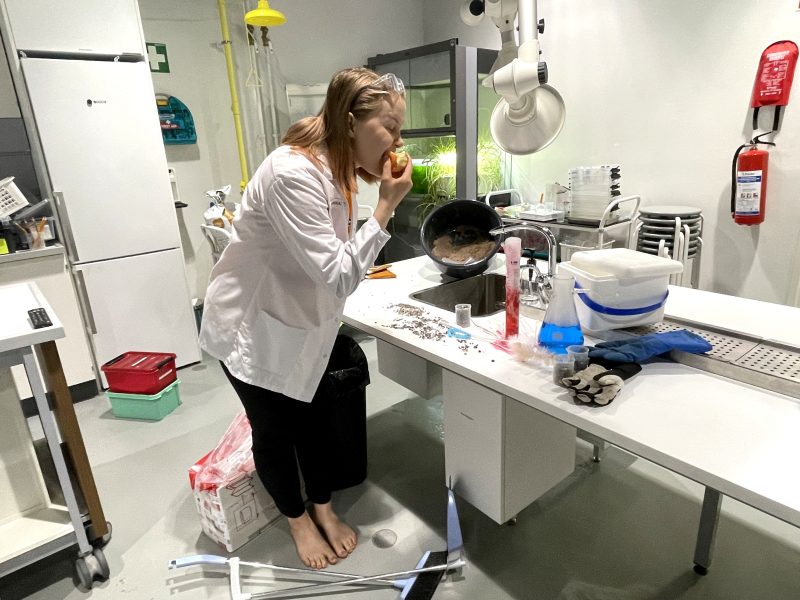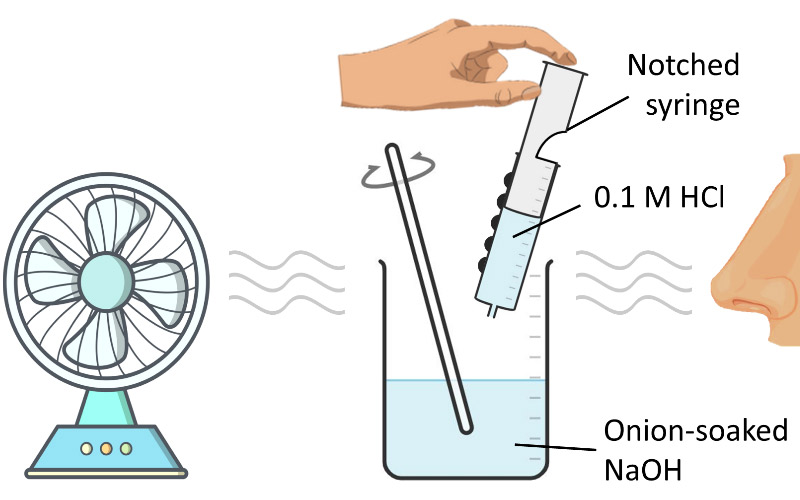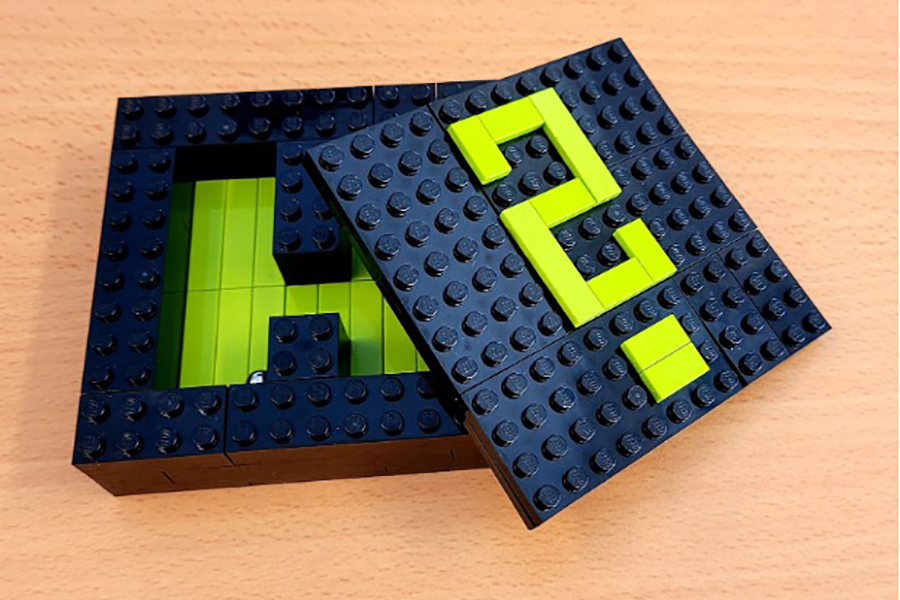Supporting materials
Download
Download this article as a PDF

This article was adapted from the Lab Disasters activity on the OTA e-learning platform.
What can go wrong in a chemistry lab? Explore lab safety and consolidate the new knowledge by creating a fun horror story about a lab disaster.
Lab disasters is a storytelling exercise about chemistry and laboratory safety. It can be used in the classroom or online, and it is strongly inquiry-based learning.
The exercise was prepared for chemistry lessons with students aged 10–14, but it has also been found to work with students older than 14. Even adults find this exercise fun and educational. The activity addresses general safety with a focus on safety in the laboratory (lab).
The students first consider safety by examining an artwork, then then reflect on lab safety precautions, and finally tell a horror story about a lab visit where everything goes wrong.
The activity outline is based on the three-stage model,[1,2] in which three distinct activity stages – motivational, investigational, and consolidation – are used to promote learning.
1. Motivational stage
In this stage, a link is established between a topic from the curriculum and real-world examples that are relevant or engaging from students’ perspectives, for example, something linked to a phenomenon in nature or from students’ everyday lives. Setting the first stage properly is one of the crucial points when planning school lessons. If students are presented with an issue that is interesting to them, they are more likely to actively engage with the content of the lesson.
2. Investigational stage
This stage is a natural follow-up of the first stage, where students take matters in their own hands, with increased motivation to complete the task and find solution(s).
Teachers should establish a focus on the topic, set objectives of the learning unit, and lead the process with an appropriate teaching method(s), for example, resource-based learning, inquiry-based learning, or setting small-group tasks. Students should be presented with all necessary information, so they can follow tasks with as little intervention as possible, and this is also the stage where a space for open questions should be established.
3. Consolidation stage
This stage involves reflecting on the issues through methods such as discussion, argumentative debate, and role play, and deriving relevant decisions by considering the issue.
Students are expected to link the scientific topic to the issue that was presented to them in the motivational stage and end the lessons with a meaningful conclusion, whether it is a presentation for the class, a consensus decision, or a report on the experimental results.
In this activity, students connect chemistry with art through storytelling by examining classical paintings.

This activity should take around 15 minutes.
Because hazardous substances and compounds are handled in the lab, it is important to take safety precautions. In this activity, students discuss and recap lab safety precautions. Ideally, the activity should be carried out in a school science lab.
This activity should take around 25 minutes.

Hopefully, the students will have come up with something like the following list (or the safety list used by the school). The teacher can add any important rules that the students have missed. If the lab safety summary is insufficient, more information about lab safety guidelines can be found online.[3]
In this final activity, the students consolidate what they’ve discussed about lab safety through a fun exercise where they tell a story about a lab disaster.
This activity is expected to take around 40 minutes, depending on the size of the class.
This fun exercise, where students invent a disaster scenario, encourages them to really engage with the purpose of safety precautions and what can go wrong if they aren’t followed. The stories can be very strange and dark, and usually in the end not only the lab, but the whole world explodes. The teacher should not try to prevent crazy ideas, but let the students be very creative with their story. By the end of this activity, students are expected to understand the importance of precautionary behaviour in the lab.

This activity was developed by OTA – Science through Art, an Erasmus+ project.
The consortium consists of six organizations from four different European countries:
Slovenia: the Education Centre Geoss is the coordinator of the project, with partners Litija Primary School and the National Gallery of Slovenia;
Finland: Heureka Finnish Science Centre;
Cyprus: Innovade research organization;
Italy: CESIE study centre.
Partners of the project prepared materials for primary/secondary school teachers of science subjects in formal education.
More than 100 activities, covering more than 60 subjects from chemistry to mathematics and physics, for students aged 12–14 were developed. The activities embody the STEAM approach: scientific subjects are connected with various arts and art expressions, and the activities are based on experiential learning and are interactive and connected to societal issues or phenomena.
You can view all project results on the OTA e-learning platform: https://elearning.ota-project.eu/
This article is inspired by the Erasmus+ project OTA – Science through Art. The content in the article is strongly linked to the project’s results, which were developed by the consortium of the project and funded by the European Union.
[1] Sormunen K, Keinonen T, Holbrook J (2014) Finnish science teachers’ views on the three stage model. Science Education International 25: 43–56.
[2] The OTA Learning Methodology: https://elearning.ota-project.eu/methodology/
[3] General laboratory safety manual: https://uh.edu/ehs/manuals/files/laboratory-safety-manual.pdf
Download this article as a PDF

Discover simple adaptations to apparatus and experiments that make practical chemistry more accessible to students with vision impairment.

What's wrong with 'chemical-free' labels? Is ‘natural’ necessarily better? Learn how to spot pseudoscientific fake news in the…

Thinking outside the box: explore the nature of science by building LEGO mystery boxes and challenging your students to solve the…